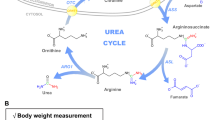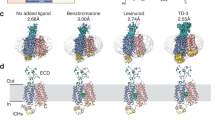Abstract
URINE from patients homozygous for hereditary atypical serum cholinesterase (HASC) and from normals (mainly laboratory personnel) was collected and refrigerated immediately. The cholinesterase genotype, as shown in Table 1, was determined by reported methods1,2 on blood specimens drawn at the same time. The urine was lyophilized and reconstituted with distilled water to one-fifth the original volume. The concentrates were extracted by a slight modification of the method of Biran and Bartley3, as shown in Fig. 1.
This is a preview of subscription content, access via your institution
Access options
Subscribe to this journal
Receive 51 print issues and online access
$199.00 per year
only $3.90 per issue
Buy this article
- Purchase on SpringerLink
- Instant access to full article PDF
Prices may be subject to local taxes which are calculated during checkout
Similar content being viewed by others
References
Kalow, W., and Staron, N., Canad. J. Biochem. Physiol., 35, 1305 (1957).
Rubinstein, H. M., and Dietz, A. A., J. Lab. Clin. Med., 61, 979 (1963).
Biran, L. A., and Bartley, W., Biochem. J., 79, 159 (1961).
Author information
Authors and Affiliations
Rights and permissions
About this article
Cite this article
RUBINSTEIN, H., DIETZ, A. & CZEBOTAR, V. Unusual Urinary Compound in Patients Homozygous for Hereditary Atypical Serum Cholinesterase. Nature 202, 705 (1964). https://doi.org/10.1038/202705a0
Issue date:
DOI: https://doi.org/10.1038/202705a0



